Is India headed for economic autarky?
The upshot of an inward-looking regime is a diminishing extent of trade openness - a sharp contrast with the East Asian miracle economies that prospered with export-orientation, writes N Chandra Mohan for South Asia Monitor
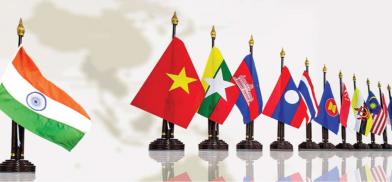
Prime Minister Narendra Modi’s economic vision for an 'Aatmanirbhar' or a self-reliant India has triggered speculation that it augurs an inward-looking, autarkic regime. The confusion is that it means different things to different observers, particularly when decoding his alliterative style and penchant for one-liners.
Several years ago, Deutsche Bank argued that a "clear and internally coherent economic model" was being articulated by Mod: That a shift was underway from a services-driven growth process to an East Asian manufacturing export-led growth model exemplified in countries like South Korea.
Self-reliant India
That India’s prime minister has been profoundly appreciative of what the East Asian economies have achieved is no secret when he was earlier chief minister of Gujarat. Robert Kaplan, author of the book "Monsoon: The Indian Ocean and the Future of American Power", asked Modi whether he was trying to create a Singapore or Dubai in Gujarat. Modi’s reply was no, as Singapore and Dubai are only city-states. There can be many Singapores and Dubais, he argued. But the real punch line was when he forcefully stated that “Gujarat as a whole will be like South Korea. Global commerce is in our blood.”
There is an equally compelling contrary view that there is no grand theorising that can be associated with India’s premier. Far from articulating any economic model, Modi's forte is only a decisive, single-minded focus on getting things done. That his policy drive has so far only implemented the economic agenda and unfinished reforms of the previous United Progressive Alliance (UPA) and Congress-led governments. 'Aatmanirbhar Bharat' thus is only a reversion to an earlier regime of self-sufficient, import-substituting industrialisation pursued in various Five Year Plans after the country became independent from British rule.
But the persisting confusion is how to reconcile Aatmanirbhar Bharat with a desire to simultaneously participate in global supply chains and raise the global share of India’s exports from 2.5 percent in 2015 to 3.5 percent in 2020? How is all of this possible when India has not signed any free trade agreement in the last six years, even walking away at the eleventh hour from signing the Regional Comprehensive Economic Partnership (RCEP) last year?
South Korea achieved rapid rates of export-led economic growth. India, for its part, has hiked most favoured nation tariffs from 13.5 percent in 2015 to 17.6 percent in 2019.
The US, EU and China raised serious questions on India’s “rising trade barriers and restrictive investment policies” at the World Trade Organisation’s Trade Policy Review in early January. EU is India’s largest trading partner accounting for euro 80 billion worth of trade in 2019. EU Ambassador Joao Aguiar Machado noted the objectives of a self-reliant India and desire to integrate into global supply chains while expressing concern “about the continued trend in the policy pursued by the Government of India to apply new barriers to trade between India and the rest of the world, including the EU.”
East Asian miracle economies
The upshot of an inward-looking regime is a diminishing extent of trade openness - a sharp contrast with the East Asian miracle economies that prospered with export-orientation. The share of trade in GDP or trade intensity has dropped from 48.9 percent in 2014 to 40 percent in 2019, the lowest levels in a decade and a half.
According to Biswajit Dhar of Jawaharlal Nehru University, two factors led to this drop in trade intensity: one, the country’s exports had lost momentum, and two, a number of domestic industries demanded tariff protection as they were failing to compete with imports in the domestic market, resulting in a sharp squeeze on imports in the Indian economy.
To be sure, Modi wants to boost the manufacturing sector in a big way and make India a global hub. The share of manufacturing has stagnated at 15-16 percent of GDP. But the problem is that this sector is not absorbing the millions who are leaving the farms and heading to the towns and cities for work. This is why he openly welcomes foreign investors to set up facilities.
According to him, a self-reliant India is also a reliable friend for the world; that it’s not about looking within but about looking out for the world; that India is keen to be part of global value chains and wants FTAs that are fair and non-discriminatory.
Rejoining RCEP
However, to integrate with global supply chains there is no escape from reconsidering rejoining RCEP sometime in the near future. Without reversing the extent of trade openness, it may be difficult to negotiate FTAs with the US and EU. While India may not immediately lower tariffs, steps to increase imports of critical raw materials required to manufacture finished products are likely according to government officials.
Becoming a USD 5 trillion economy will remain a chimera if there is a reversion to an autarkic import substitution strategy of yesteryear instead of more outward-orientation like in East Asia.
(The writer is an economics and business commentator based in New Delhi. His views are personal. He may be contacted at nchandramohan@rediffmail.com)




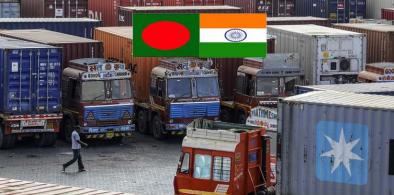
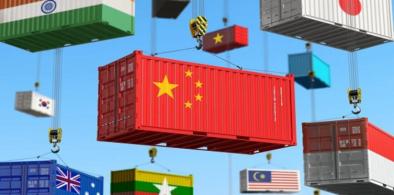
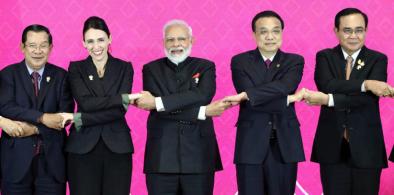
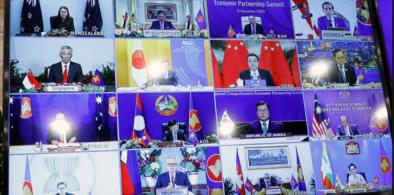






Post a Comment